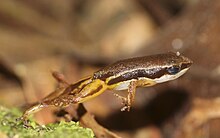What is Identity Theft?
Identity theft, also known as ID theft is a crime in which a criminal obtains key pieces of personal information, such as Social Security or driver's license numbers, in order to pose as someone else. The information can be used to obtain credit, merchandise, and services using the victims’ name.
How to Prevent Identity theft
The best way to prevent identity theft is to protect your identification and financial information from prying eyes. Don’t keep all of your identification and financial information in one place and never write down your PIN (personal identification numbers) anywhere. The same thing goes for Internet passwords and member ID information, especially if the password and ID leads a person to a financial site.
You should also never respond to emails or snail mail that requests personal information such as passwords or PIN numbers. You should also avoid requests for your social security number or employee identification number as bogus credit cards and access to your personal information can also be obtained through those numbers. Other information you should avoid giving out is your mother’s maiden name, your pet’s name or any other details that could be used as part of a security verification question on your account.
If you have personal information stored on your computer or use your computer to buy items over the Internet on an unsecured wireless network, you can be subject to Computer Identity Theft. This happens when the thief engages in Computer Hacking and is able to obtain your credit card information, social security number, and other personal information, and then poses as you to take on your identity, or simply to access and withdraw funds from your bank account(s).
The best prevention for identity theft is to protect your wallet, purse, mailbox and the contents of your desks or files with a watchful eye, and locks if appropriate. You should also never store your personal information on an unsecured web site. Always shred documents with your personal data on them and never throw out pre-approved credit offers without shredding them or ripping them up first. This way dumpster diving thieves can’t get hold of your account numbers and steal your identity!
What is computer identity theft?If you have personal information stored on your computer or use your computer to buy items over the Internet on an unsecured wireless network, you can be subject to Computer Identity Theft. This happens when the thief engages in Computer Hacking and is able to obtain your credit card information, social security number, and other personal information, and then poses as you to take on your identity, or simply to access and withdraw funds from your bank account(s).
How to prevent computer identity theft?

Instructions
- 1Buy a paper shredder and shred any letters, bills and credit card statements before you throw them in the trash. In fact absolutely everything and anything that has you personal information printed upon it should go through the shredder.Make sure you get into the habit of checking through your bank statements and credit card bills. If anything does not look right or is an obvious fraudulent transaction then notify your issuers right away.
- 2Be extremely careful when dealing with companies online. Get into the habit of not trusting websites that ask you for your personal details. Only use online stores and online banking if you are absolutely certain of who you are dealing with. Even then be very skeptical and scrutinize every detail. Fraudulent websites can be set up to look like your online banking facility. Always type the URL of your banking facility into your browser.Make sure your computer has a full version of security software on your computer such as Norton. And always use secure servers where you get the opportunity. Your bank should be using secure servers.
- 3Be careful with your social security number (SSN), if this item of personal information is leaked to anyone that shouldn't have it then disaster could soon follow. If you suspect your SSN has been stolen you must contact the authorities right away.This number is a very important identifier as to who you are; this is one of the items that identity thieves will do anything to get hold of.
- 4Be wary of people behind you in the queue at an ATM; always check the cash point card reader for suspicious looking devices. Keep you PIN hidden, stand in front of the keypad, cover the buttons as you type in your PIN and certainly do not say your PIN aloud when you type it in. trust me it does happen!Hide the keypad when swiping your debit card to pay for goods in a store, and always make sure you keep an eye on your purse, wallet and pockets when you put your cards away. Make sure they are secured straight away, and if they go missing, then call your card issuer right away and notify the police.
- 5Keep tabs on your credit report; this is a great way of discovering fraudulent behavior if it happens. If you see anything that should not be there, call the companies involved, notify the credit bureaus and speak to the police.
- 6It is a good idea to get Identity Theft insurance cover on all your bank accounts and credit cards, if you can find a cheaper insurer just make sure they cover for all eventualities and a good cash figure
- 1
Read more: How to Prevent Computer Identity Theft: 6 Steps To Help You | eHow.com http://www.ehow.com/how_6041667_prevent-identity-theft_-6-steps.html#ixzz1Nc9Y3CDa


